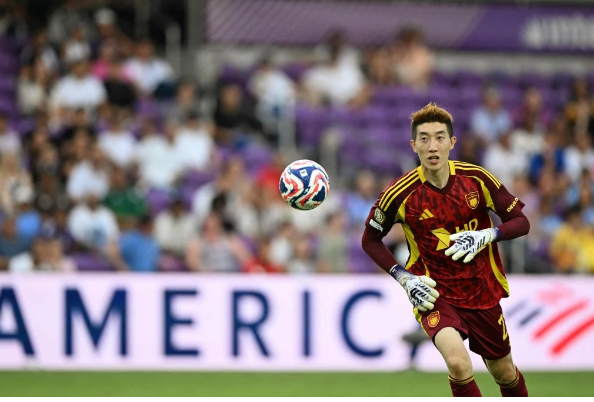Historical Context of the Ban
The 26-year ban on foreign goalkeepers in South Korea’s professional football, particularly in the K-League, was a significant policy shaped by various historical and cultural factors. Introduced in 1997, this regulation was largely influenced by a surge in nationalistic sentiments following the influx of foreign players across different leagues worldwide. South Korean football officials expressed concerns that permitting foreign goalkeepers would undermine the development of domestic talent. They believed that prioritizing local players would provide a more substantial foundation for the future of the sport in South Korea.
This nationalistic stance aimed to ensure that homegrown talents could thrive without the competition of international goalkeepers. As a result, the ban significantly impacted the K-League, restricting clubs from recruiting skilled foreign players whose experiences could have greatly enhanced the competitiveness and quality of South Korean football. Instead, clubs were compelled to invest in and cultivate domestic goalkeepers, limiting the pool of talent available for selection to compete on an international stage.
Over the years, the ban influenced the trajectories and careers of numerous South Korean goalkeepers. While many achieved commendable success and contributed to the rise of football in the nation, the lack of foreign competition may have stunted their growth in terms of exposure to varying styles and techniques prevalent among international goalkeeping talents. The ban, therefore, not only shaped individual careers but also the tactical evolution of teams within the league, as clubs had to adapt their strategies to a pool of players without the diverse skill set foreign goalkeepers could have provided.
As discussions around lifting the ban gained momentum, stakeholders recognized the need to reconsider this approach, especially with the growing ambition of South Korea aiming to compete effectively at the 2026 FIFA World Cup and beyond. The recent changes mark a pivotal moment in the quest for an enhanced footballing culture, potentially reshaping both the K-League landscape and the broader dynamics of South Korean football as a whole.
Details of the Recent Decision
In a significant shift for South Korean football, the governing body has recently lifted the ban on foreign goalkeepers in the K-League, a decision that ends a 26-year restriction. This change was made after extensive discussions among stakeholders, including club representatives, players, and coaches. The sentiment surrounding this decision has been largely positive, with many acknowledging the need for adaptation to the evolving global landscape of football. The governing body recognized that allowing foreign goalkeepers would not only enhance the level of competition in the league but also provide domestic players with opportunities to learn from international standards and practices.
The decision emerged from a thorough examination of international best practices from various leagues around the world where the inclusion of foreign players has proven beneficial. Studies showed that leagues with a diverse range of players often foster increased competitiveness and skill development, which are crucial for the success of national teams. With South Korea aiming to make a significant impact in the upcoming 2026 World Cup, the integration of talented foreign goalkeepers could play a pivotal role in strengthening the domestic game.
Clubs in the K-League are already expressing excitement about the new opportunities this policy presents. With the influx of experienced foreign goalkeepers, teams can potentially bolster their defensive tactics, enhancing match performance and overall league appeal. As clubs prepare for the impact of this regulation change, there is a shared hope that it will also stimulate a competitive spirit among local goalkeepers, encouraging them to elevate their skills in response to the heightened talent pool.
This decision marks a turning point in South Korean football’s approach to foreign player inclusion. As the K-League continues to adapt in a globalized sporting environment, the positive ramifications of this policy shift are likely to resonate throughout the league and beyond.
Impact on South Korean Football
The recent decision to lift the 26-year ban on foreign goalkeepers in South Korea marks a significant turning point for the nation’s football landscape. This change is anticipated to enhance the competitive nature of the K-League, the primary professional football league in South Korea, by introducing a higher caliber of talent in the goalkeeper position. The presence of skilled foreign goalkeepers can lead to more dynamic and challenging matches, encouraging domestic players to elevate their game to remain competitive in the evolving football ecosystem.
Moreover, this new regulation may serve as a catalyst for the development of local talent. With the introduction of foreign players, South Korean goalkeepers are likely to benefit from enhanced training environments, mentorship opportunities, and exposure to diverse styles of play. This blend of experiences can nurture their skills and instill greater tactical awareness, ultimately contributing to the overall improvement of domestic keepers in the K-League. Local clubs might see this as an opportunity to invest in player development, fostering a culture of collaboration among goalkeepers that transcends national boundaries.
In terms of recruitment strategies, clubs in South Korea may alter their approach to scouting and player acquisition in light of this policy change. The influx of foreign talent can lead to a reevaluation of existing player rosters, with teams possibly prioritizing younger domestic players for development while complementing their squads with experienced international goalkeepers. As the nation sets its sights on the 2026 FIFA World Cup, the readiness and competitiveness of the national team could greatly benefit from this strategic shift. Fans and analysts alike remain optimistic about the prospects this evolution brings, believing it could drastically impact the trajectory of South Korean football in the coming years.
Future Prospects and Challenges
The recent decision by South Korea to lift the 26-year ban on foreign goalkeepers in its domestic K-League heralds a transformative period for the nation’s football landscape. As South Korea prepares for future competitions, including the 2026 FIFA World Cup, the integration of foreign players into the league presents both opportunities and challenges. One notable prospect is the potential enhancement of skill levels among local goalkeepers. Exposure to diverse playing styles and professional experiences of foreign goalkeepers may foster competitive dynamics within teams, leading to improved performance across the board.
However, the assimilation of foreign talent is not without hurdles. Cultural differences may pose significant adaptation challenges for foreign players as they navigate a new environment, language barriers, and differing social norms. Moreover, South Korea’s K-League will require comprehensive governance frameworks and regulations to ensure that the influx of foreign goalkeepers doesn’t overshadow homegrown talent. Stakeholders must address questions regarding the placement and training of local goalkeepers, ensuring they continually receive adequate opportunities for development.
Another challenge lies in the potential resistance from fans or clubs that are accustomed to the traditional model of local player recruitment. Engaging these stakeholders in constructive discussions will be crucial in facilitating a smooth transition to a more inclusive league structure. In addition, successful models from international leagues known for their integration of foreign players can offer valuable insights for South Korea as it embarks on this new chapter.
Expert opinions suggest that while obstacles exist, the future outlook for South Korean football is optimistic. Embracing foreign goalkeepers not only diversifies the talent pool but also enhances the competitive stature of the K-League on a global scale, paving the way for a new era in South Korean football.

